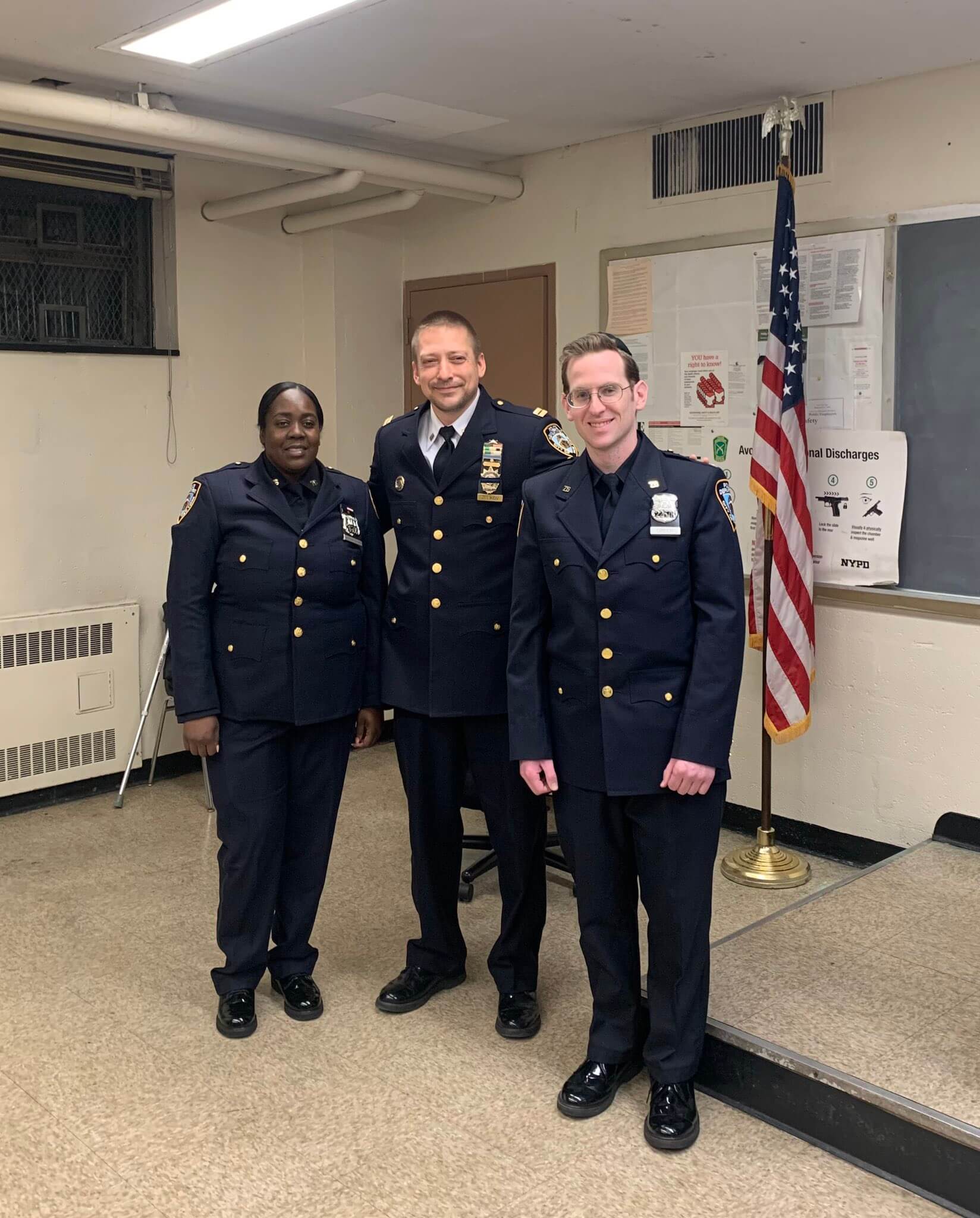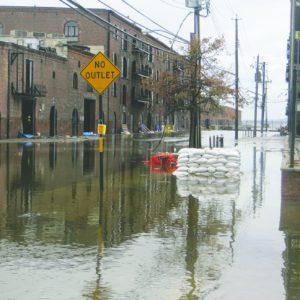On January 9 at 2:35pm, a commuter waiting for their train at the 9th and Smith station rushed to find help after seeing someone fall onto the tracks. Officers Morgan Brown and Meir Green sprang into action. As the train approached, Officer Brown stood by the entrance to flag the conductor. Meanwhile, Officer Green jumped into the subway tunnel to assist the fallen person. Unable to move them alone, a bystander joined Officer Green, and together they moved the fallen commuter off the tracks, just moments before the train arrived.
On January 31, at approximately 8pm, a Domino’s delivery worker was robbed by four individuals. Within three hours, trainee police officers from the 76th precinct found the four suspects.
On February 1, at approximately 7:31pm, I showed up for the 76th Precinct’s monthly community meeting. I slowly walked up the steps into the precinct, double-checking my phone to make sure I had the time and location (191 Union Street) correct. It was my first time at the precinct, and I entered only to immediately see an officer opening a box of pastries. While he confirmed a common stereotype, another officer confirmed the purpose of my visit and buzzed me through the entrance.
Walking past the front desks on the right, then the holding cells on the left, I took the stairs to the basement community space where the meeting was held. To my chagrin, I discovered I was late — the meeting had already started and the room was filled with about a dozen attendees. I scribbled my name onto the attendee list and took a seat, feeling as though I was back in school, with the 50s era architecture, the classroom-style seats, and the podium and chalk board at the front of the room.
As a meeting meant to connect the members of the precinct with the surrounding community, it was led by representatives of each: Police Captain Vitaliy Zelikov and Community Council President Jerry Armer, a local resident. The 76th Precinct includes Carroll Gardens, Red Hook, Cobble Hill, parts of Gowanus, and the Columbia Street Waterfront District. Community Council meetings are held once a month, and from what I could tell, it is often the same crowd. For those who have not attended a meeting, the meetings are an opportunity to learn more about the neighborhood, meet with other community members, and to ask questions. The 76th Precinct holds its meetings on the first Wednesday of each month at 7:30pm.
The meeting started with Armer announcing upcoming elections for the Community Council officers (i.e. his position and others from the community leading the meeting). Voting will take place at the April meeting and there are 5 positions up for election. This was followed by a catchall series of community updates from Armer: upcoming subway service changes over the weekend, a food distribution volunteering opportunity, a blood drive.
Getting into the meat and potatoes of the meeting, Captain Zeliov retold the story of incredible actions of Officers Brown and Green, and gave an update on crime: there was a statistically insignificant increase in reported crime compared to the previous year. (The slight uptick was largely due to identity crime fraud.)
The precinct is currently assigned at transit locations to deter crime, and new officers have recently joined the precinct, straight from the police academy. The precinct has also been coordinating closely with the Port Authority’s security division in response to Red Hook’s cruise terminal’s designation as home for 600-1000 asylum seekers. A concern that some of the community attendees brought up was unsafe behavior related to the Tesla dealership located at 160 Van Brunt Street. More than one attendee commented on cars from the dealership driving without license plates and speeding, in addition to the dealership putting out cones that dangerously force drivers into bike lanes. Since first hearing complaints earlier in the month, the precinct has reached out to Tesla staff to discuss the situation.
Captain Zelikov then answered questions about a suite of police programs: there is a tip line available so that crimes can be reported anonymously, though if a crime is in progress—call 911, not the precinct. The precinct runs a tagging program to prevent crime—expensive goods can receive a tag that is registered with the precinct. Children 14-20 can join the Police Explorers Program to shadow police officers and learn firsthand about the criminal justice system. According to the NYPD website, the Explorers “are taught the importance of higher education, self-discipline, and respect for diversity and human dignity through training, involvement in community service projects.”
A week after the meeting, I followed up with Captain Zelikov to learn more about the precinct. Captain Zelikov’s family emigrated to the United States from Belarus in the early 90s. Growing up in Brooklyn, he saw the role that officers played in his own neighborhood and wondered if it was something he’d enjoy. After serving in the Army, he joined the NYPD, seeing it as an opportunity to give back to his city. He has served for 18 years, working in many different neighborhoods, from the most affluent to the poverty-stricken.
I asked him several questions about the precinct and its goals. Despite stating that the precinct’s priority is to keep crime low, each of his answers underscored his own goal for the precinct: to build close bonds with the community. The precinct recently increased its team of Youth Coordination Officers, who attend local sports and events so that local kids can get to know the officers. Meanwhile, Neighborhood Coordination officers (NCOs) are each assigned one of four geographic sectors. The idea here is for officers to work in a small area, building relationships with neighbors and business owners. According to Zelikov, when there are community complaints, it is the NCOs who are almost always able to work it out.
The weekend after the meeting, I stopped by Red Hook Mutual Aid’s “store,” where volunteers were busy providing clothes, bread, and English classes to the asylum seekers located in Red Hook. Many of the men, many of them immigrants from Latin America, speak very little English and are eager to find work, asking about documents they need and how they can get started. The volunteer coordinator noted that one of the precinct’s officers had recently stopped by to introduce himself to the asylum seekers: “It was nice for him to stop by and say hi, just so that the men aren’t afraid, ya know?”












One Comment
Thanks you for this report, Katherine. Well done.